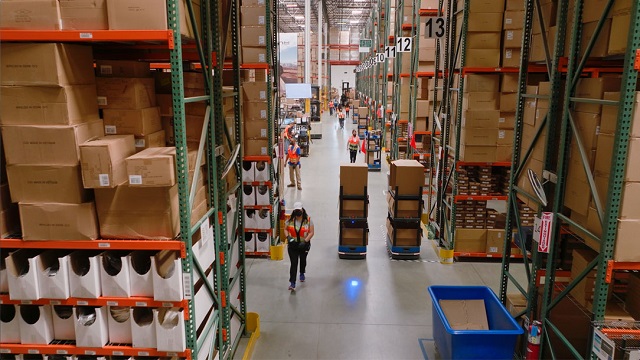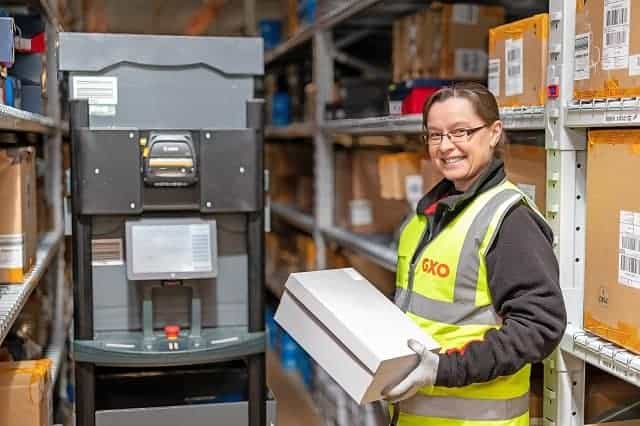Consumers spend around $500 billion shopping online each year. Current trends and predictions indicate continued e-commerce growth, with no signs of slowing anytime soon. Online shopping offers convenient perks for both consumers and e-commerce companies, enabling shoppers to shop in their pajamas while businesses can avoid the fulfillment expenses of maintaining a brick-and-mortar retail store.
For e-commerce businesses, fulfillment costs are an increasingly important factor in doing business online. Consumers place their orders, and somewhere on the planet, a human or machine must fulfill that order. Outsourcing may make sense for some companies, while others rely on a fulfillment vendor to keep their overhead manageable. Smaller companies may benefit more from in-house order fulfillment while they’re small, but scaling in-house fulfillment as the company grows often proves challenging. Outsourcing fulfillment means you’ll pay a few additional costs, but volume discounts and other benefits (like reduced in-house labor costs) make it worthwhile for many companies today.
Regardless of the way an ecommerce company chooses to fulfill their orders, fulfillment and 3PL costs are a part of a company’s bottom line. For the purpose of this article, we will clarify fulfillment costs as they apply to third-party fulfillment logistics services. Fulfillment fees are the costs associated with receiving and storing products along with processing orders from handling to shipping. These costs may vary per order based on the products involved, order processing speed and other factors.
Breakdown of fulfillment costs

Regardless of whether a company chooses to handle their own fulfillment operations or outsource it to a third party, several different fees comprise the total fulfillment cost for an item or order. The fulfillment cost for any given item may include a few or all of the following fees:
- Setup fees: Typically a one-time payment that’s often based on the type of business you operate and the amount of volume you expect to fulfill. Some companies charge a flat rate while others base the setup fee on the type of inventory they need to deal with along with other factors from intake to delivery.
- Intake fees: The company that handles your fulfillment also handles your inventory. Intake and receiving fees cover all the processes and services a fulfillment center provides to receive and process your inventory. Most of these fees get charged by the hour or on a per-item or per-unit basis, such as a flat fee for each pallet or bin.
- Storage fees: Storage fees vary based on the item and the equipment, time or space needed to receive it, store it and process it for shipping. Fulfillment centers use different methods for storing and moving goods. You may pay a fee per pallet stored or a storage fee based on the total amount of space your inventory occupies.
- Pick and pack fees: Pick and pack fees cover picking the item from storage and packaging it for shipment. The fees for this range from roughly $3 to $5 per item. Some companies offer bulk rates for shipping multiple items, but some may also tack on a small order fee as well.
- Shipping fees: Fulfillment shipping fees are the cost of shipping an item to the consumer once it leaves the fulfillment center. Most fulfillment centers can handle this aspect for you, but some e-commerce companies opt to use their own carrier.
- Kitting fees: Kitting fees cover assembling items before fulfillment. These fees may also apply to returned items, discussed below.
- Return fees: If the product is damaged or does not work for some reason, the return fee covers receiving and dealing with defective items. These fees cover handling the item, assembling it and inspecting returned items for problems.
- Account management fees: The account management fee is typically an amount added to your monthly invoice, which handles administrative costs such as handling customer service calls or other incidentals associated with fulfilling your orders.
Depending on the contract an e-commerce company enters into with a fulfillment provider, fulfillment fees may be a simple calculation of intake, storage, pick and pack and shipping fees, or they may include a variety of additional fees depending on the services provided. This breakdown of fees makes it easy to see how different variables, such as a high volume of returns, can impact a company’s fulfillment costs.
Fulfillment and 3PL pricing models
Different 3PLs and fulfillment companies use different pricing models. Some companies may charge you a unit-based fee for intake and packaging while also charging you by the cubic foot for storing items.

Screenshot via eFulfillment Services
Models based on individual items
- By the cubic foot (for inventory storage)
- By the order (for pick & pack costs)
- By the shipment (receiving costs)
- By the kit (for kitting costs)
- Flat rate for customer support costs
Unit-based models
- By the pallet
- By the unit
- By the hour
As an example, inventory storage costs based on cubic feet might be $0.30 per cubic foot per month, while unit-based pricing by the pallet might be $20 per pallet per month. The fulfillment center pricing model has a significant impact on total costs, so companies need a clear understanding of what fees apply and what fulfillment services pricing models are used to accurately estimate their fulfillment costs.
How to calculate fulfillment costs
If you’re after a rough estimation of fulfillment pricing, you may need to do some math and determine how much inventory you plan to store at the fulfillment center and determine how much storage space is needed. Unless you have exact figures, always assume you’ll need at least ten percent more space than you estimate. You’ll need to know:
- Your fulfillment provider’s rates (based on item, unit, etc.)
- The number of pallets, orders and units per order for the time period (month, etc.)
Then, determine the total fees for each line item, such as:
- (5 pallets) x (storage fee per pallet)
- (10 orders per month) x (pick and pack fee per unit)
Finally, add your totals for each line item. This figure represents your total fulfillment cost for the time period. The more accurate your figures and fees, the more accurate your estimation. Some fulfillment providers, such as TAGG Logistics and Fulfillify.com, offer fulfillment cost calculators to help clients accurately calculate fulfillment costs based on their fees. ShipBob also offers a cost calculator for sellers utilizing Amazon’s Fulfilled by Amazon (FBA) service. eFulfillment Service has a comprehensive breakdown of how to calculate fulfillment costs, as well.
Comparing your costs of handling fulfillment in-house vs. outsourcing to a 3PL is worth a look, or a second look. While outsourcing isn’t the right solution for every company, some businesses find that outsourcing fulfillment is a cost-saving solution that enables them to better meet their customers’ needs.
Interested in more? Let’s discuss the solution that’s right for you. Contact us today.


